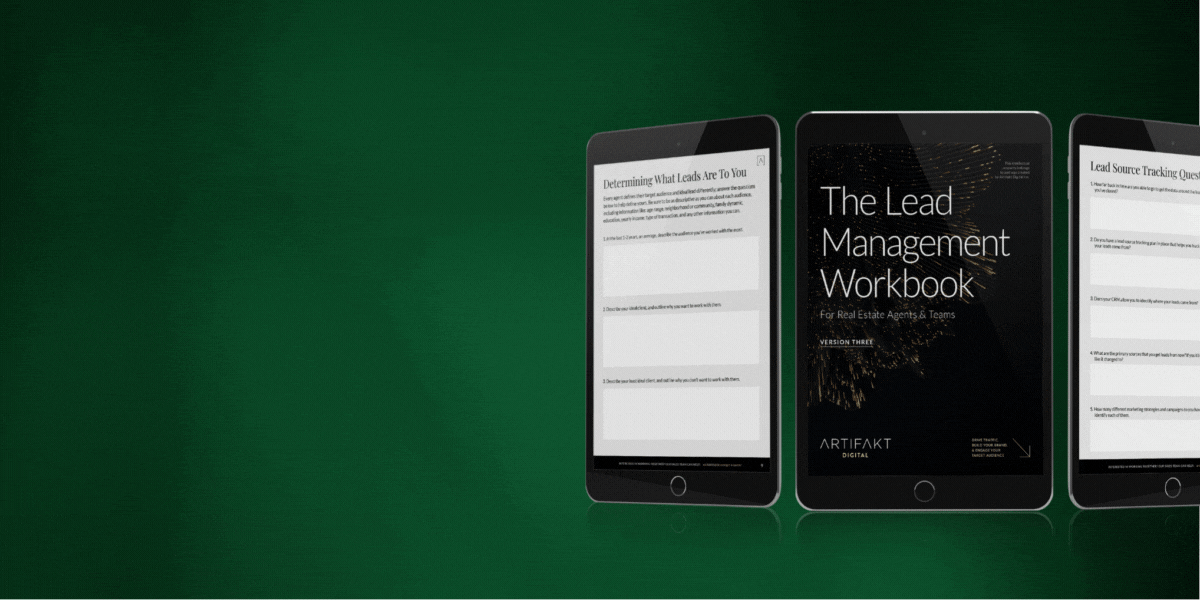Email Marketing Best Practices for Real Estate Agents

If you’ve never invested time in email marketing in the past, now is the time to do it; and if you’ve already been doing it for awhile, now is not the time to give up.
And that’s because email newsletters and email marketing are rising in popularity (and effectiveness).
They’re becoming more effective than ever as a way of building a true, honest connection with your audience through producing (or curating) meaningful content.
Part of the reason email newsletters and marketing are popular again is because of the change in mindshift during the course of the pandemic where people have adopted more screen-time, which is great news for marketers.
★ Just getting started with email marketing? Have a look at this post called: Building an Effective Email Newsletter Strategy
If you’re planning on investing in your email marketing strategy, here are a few best practices you should know:
1. Never Buy Email Marketing Lists
The best email marketing list you can have is the one that you painstakingly build, care for, and maintain yourself.
To be successful, your email marketing campaigns should be working towards the goal of improving a few key metrics, like your open rate. Buying a list of unsolicited email contacts that have never heard of you, your brand, or your business is a sure fire way to decimate your metrics; but even metrics aside, these contacts are very unlikely to work with you, so it’s an all around lose situation.
Buying email marketing lists, no matter how good of a list you think they are, is never a good approach to take if you want to build an inbound marketing strategy that gets results.
★ Want to learn more about inbound marketing? Have a look at these posts and resources:
- The Philosophy of Inbound Marketing, and Why it Works for Agents
- Building an Inbound Marketing Strategy to Get Higher Quality Leads
- Download our eBook: The Inbound Marketing Guide for Real Estate Agents
2. Pay Attention to Metrics
No matter which email marketing platform you use, you’ll be able to see some sort of metrics after your emails are sent out, and understanding those metrics and applying what you’ve learned to future campaigns will help you send better, more targeted emails that get the results you’re looking for.
The basic information you should be looking at is:
- How many people received it in their inbox (Your Delivery Rate)
- How many how many people have opened it (Your Open Rate)
- How many people clicked something in it (Your Click Rate)
All of the metric information above, over time and over multiples campaigns, gives you the information you need to send more targeted emails in the future.
But to get a good sampling of metrics, you should always be testing, especially early on when you first begin email marketing; for example, you should try sending them at different times in the day, building in different CTAs, etc.
Once you send out a few email campaigns, and you have some of this collective information, you can apply it to your future campaigns as you’ll have know when you have the best delivery rates, open rates, and click rates.
Ideally, you should be reviewing all of these metrics on a consistent basis, especially if your email marketing database is constantly growing because as you add more people over time, you’ll basically be building a new database.
★ Want to learn more about email marketing metrics? Have a look at these posts:
- How Real Estate Agents Can Improve Their Email Marketing Open Rate
- Using Personalized Marketing to Get Better Engagement (and Leads)
- Why You Should Never Stop Building Your Email Marketing Database
3. Keep Your List Clean and Updated
To be effective, your email marketing list should be regularly audited and cleaned up. In some larger team organizations, there may even be a team member who’s entire job it is to manage the marketing database and ensure it’s up-to-date.
A forgotten about marketing database is an ineffective marketing database.
Without a managed, taken-care-of, up-to-date email marketing database, you won’t be able to send your email marketing in a way that gets results or have the metrics to make informed decisions. As a marketer embracing email marketing, the more time you spend in your email marketing platform auditing your database, the better results you’ll get.
★ Want to learn more about database building and management? Have a look at these posts:
- Why You Should Never Stop Building Your Email Marketing Database
- Right Now, You Should Focus on Building Your Database
4. Segment Your Database
Not all of the contacts in your email marketing database are the same, and so, they shouldn’t be treated that way. What one person finds valuable is not necessarily what the next will, which is where marketing segmentation comes in.
Marketing segmentation starts with identifying the needs of specific groups of people within your marketing database, and there are many ways to break that down. For example:
- By transaction type: buyer, seller, investor, etc.
- By transaction property type: freehold, townhouse, etc.
- By period of time: transacted 1 year ago, 5 years ago, 10 years ago, etc.
- And many more different ways…
Segmenting your marketing database allows you to send more strategic, more relevant, more targeted email marketing that gets better results because your emails will be more valuable to the people that receive them.
★ Want to learn more about segmentation? Have a look at this post called: How (and Why) to Build a Real Estate Marketing Segmentation Strategy
By following the best practices above, you’ll be able to send the right emails, to the right people, at the right time, and ultimately, generate much better results with each and every email campaign you send out.
Want to improve your overall lead generation plan? Download our Lead Management Workbook. It’s a self-guided, interactive workbook where you answer questions about your current lead generation plan, outline what’s working and what isn’t working, and put together a plan to improve it. And, it’s free to download.





















